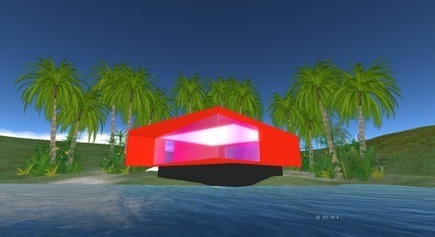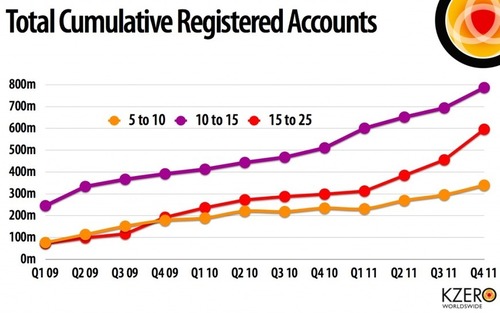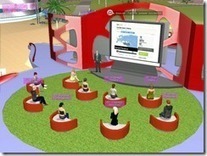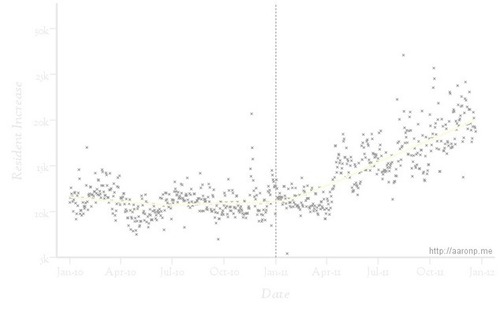Game fundings destroyed the record book for fundings this year as 145 companies raised more than $1.540 billion in 2011, not counting initial public offerings.In 2011, games took center stage. Game investment changed fundamentally during the year, as investors shifted their money into social, mobile and online games as they chased after users who were embracing the newest platforms for games.The total game investment number is up more than 47 percent from the $1.05 billion raised by 91 companies a year ago, based on VentureBeat’s own research. By comparison, 115 game companies raised a total of $663.1 million in 2009. And in 2008, 112 game companies raised $936.8 million.
Via venturebeat.com
Game companies raise $1.54B in 2011
Open Metaverse Currency and grids rise in 2011
The OMC, or Open Metaverse Currency, is a virtual currency from Austria-based VirWoX that can be used to buy and sell virtual goods on OpenSim grids.The OMC is fully convertible, and can be bought and sold for US dollars, British pounds, Euros, and Swiss francs, and can also be traded for Second Life ‘s Linden dollars. The OMC has an exchange rate of around 270 OMC to US $1.The OMC isn’t transferred from grid to grid — instead, it’s kept in an online VirWoX account, requiring each transaction made inside a virtual world to be verified on their website. The status bar on the top of the viewers will show your current OMC currency balance if you are on an OMC enabled grid. A recent innovation — Pocket Money — allows hypergrid travelers to keep a portion of their balance in a fast-access account, allowing in-world purchases to be made without a second confirmation step.
Via www.hypergridbusiness.com
“Levitating” Residence | OpenSim Creations
Quick stat: Top 15 Virtual Worlds
Via www.kzero.co.uk
Virtual World registered accounts reach 1.7bn in Q4 2011 | KZero Worldswide
Strong growth in the virtual worlds sector throughout 2011 saw total cumulative registered accounts reach 1,772m at the end of Q4 2011. This growth was driven by booming user bases from worlds such as Poptropica, Habbo, Moshi Monsters, Stardoll and Club Penguin.Encouragingly, whilst the top-tier larger worlds (with over 50m registered users) continue to attract users and leverage their brands, mid-tier worlds (10m to 50m registered users) such as Bin Weevils, Wizard 101, Minecraft, Meez and Fantage also posted positive increases.
Via www.kzero.co.uk
Qarl’s parametric mesh deformer on display, feedback sought
Yesterday (and I nearly missed it), Karl Stiefvater put up a preliminary look at the crowd-funded parametric mesh deformer. “I should specify immediately that it’s not done,” said Stiefvater, “but the heavy-lifting part of it is.”
Via dwellonit.taterunino.net
CAT UDC Blog: Second Life to vAcamedia: The Future of Virtual Worlds for Distance Learning
Beginning around 2005 Colleges and Universities around the country became increasingly interested in the learning opportunities offered by the 3d Virtual World Second Life. Colleges and Universities around the country from Texas State Technical College which developed an online associate’s degree program, to Ivy’s like Harvard, flocked to Second Life to develop virtual campuses and classrooms. At the University of the District of Columbia, the Administration of Justice program created a Second Life Virtual World to simulate investigation scenes.
Via cat-udc.blogspot.com
Invoked computing: you really can use a banana as a telephone
Alvaro Cassinelli is an assistant professor at the Ishikawa-Oku lab at the University of Tokyo. He and his partner, Alexis Zerroug, have created a multi-modal, spatial augmented reality, a system that instantaneously changes household objects into communication devices. The effect, known as “invoked computing”, is a process that has enabled Cassinelli to transform a discarded pizza box into a laptop computer and a banana into a telephone. The idea won the grand prize at Laval Virtual, an international conference and exhibition on virtual reality and converging technologies.
Via www.guardian.co.uk
Virtual Combat IED Simulation
The Raytheon team of Reston Virginia along with other technology giants involved in Virtual Combat Simulation, successfully designed a portable, fully immersive, IED training platform using commercially available, off-the-shelf components. The Virtual IED Combat Simulator provides accurate, real-time, live-Soldier simulations for training exercises. Their configuration is flexible. Due to this, individuals, teams and full units are able to be trained simultaneously. As part of the IED Defeat Task Force, Raytheon Chairman and CEO William H. Swanson stated, “The task force’s goal is to identify and field technology and training solutions designed to defeat IEDs.. The task force’s goal is to identify and field technology and training solutions designed to defeat IEDs.”
Via www.examiner.com
Second Life Statistics for 2011
As we reach the end of 2011, I thought it would be interesting to take a look back on some Second Life statistics for the past year. The last time I did this was almost two years ago, where I briefly analysed the Second Life concurrency statistics for 2006 to 2009. This time I’m going to give a brief overview of some Second Life stats for 2011 and see how it compares to 2010.
Via aaronp.me
- « Previous Page
- 1
- …
- 3
- 4
- 5
- 6
- 7
- 8
- Next Page »










Recent Comments